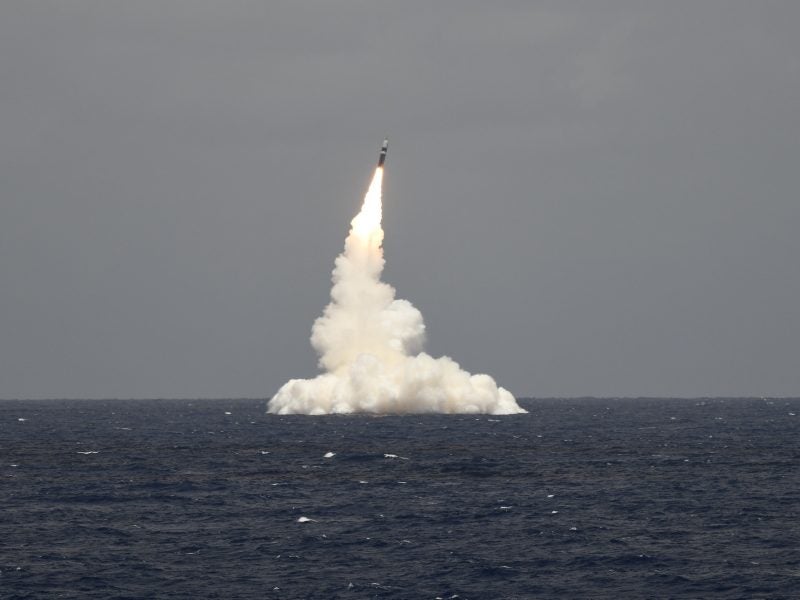
The US Navy has fielded a new low-yield submarine-launched ballistic missile (SLBM), first requested in the 2018 Nuclear Posture Review.
The new nuclear weapon is designed to fill a capability gap that the US sees it faces against adversaries like Russia and others, and delivers on a US promise to strengthen its deterrent force.

Discover B2B Marketing That Performs
Combine business intelligence and editorial excellence to reach engaged professionals across 36 leading media platforms.
In a statement released on Tuesday, Under Secretary of Defense for Policy John Rood said: “The US Navy has fielded the W76-2 low-yield submarine-launched ballistic missile (SLBM) warhead.
“In the 2018 Nuclear Posture Review, the department identified the requirement to ‘modify a small number of submarine-launched ballistic missile warheads’ to address the conclusion that potential adversaries, like Russia, believe that employment of low-yield nuclear weapons will give them an advantage over the United States and its allies and partners. “
The low-yield W76-2 is a modified version of the existing warhead used on the widely-deployed Trident submarine-launched ballistic missile. Modifying an existing warhead enabled the US to develop and deploy the new nuclear weapon quickly.
Neither the US DoD nor the US Navy has commented on what vessels the low-yield device has been deployed on, however, only the Ohio-Class submarines carry the Trident missile capable of carrying the warhead. Some reports have said that the warhead was first deployed on the USS Tennessee late last year.

US Tariffs are shifting - will you react or anticipate?
Don’t let policy changes catch you off guard. Stay proactive with real-time data and expert analysis.
By GlobalDataThe weapon is seen as a means of bolstering the US nuclear arsenal with a tactical weapon, similar to the gravity bombs carried by the US Air Force which are less destructive than conventional nuclear weapons.
The fielding of W76-2 does not mark an expansion of the US nuclear arsenal as existing warheads were modified to develop the new device. Naval Technology earlier reported that as many as 50 of the new warheads had been produced, with the first production warhead finished in February of last year.
The 2018 Nuclear Posture Review said: “Expanding flexible US nuclear options now, to include low-yield options, is important for the preservation of credible deterrence against regional aggression. It will raise the nuclear threshold and help ensure that potential adversaries perceive no possible advantage in limited nuclear escalation, making nuclear employment less likely.”
Rood added: “This supplemental capability strengthens deterrence and provides the United States a prompt, more survivable low-yield strategic weapon, supports our commitment to extended deterrence, and demonstrates to potential adversaries that there is no advantage to limited nuclear employment because the United States can credibly and decisively respond to any threat scenario.”





